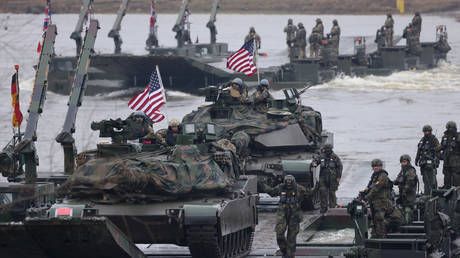The Trade “War” Is Only Making War on Our Freedoms
by Gary Galles, Mises Institute:

Analogies are incredibly powerful in extending understanding by producing dramatic new insights, such as seeing that electrical current is like water current in some ways or that much of government activity is like pirates’ plundering. William James recognized this when he wrote “talent for perceiving analogies … [is] the leading fact in geniuses of every order.”
Analogies’ ability to forcefully express ideas and arguments explain why so much of what is said, thought, and written is couched in such forms. But using analogies is also dangerous, because any analogy, however helpful, is misleading if pushed too far or used in the wrong context. Everything is both like and unlike everything else in multiple ways, so there are always many potential analogies, accurate and inaccurate, that can be applied.
Poor analogies, typically based on unimportant but obvious surface similarities, are often seductive (e.g., paternalism, to describe coercive government policies — your parents once had power over you “for your own good,” but they knew you better than government, cared for you more than government and didn’t steal from strangers to finance the exercise of that power), and even good ones break down at some point (e.g., wave theory helps understand some of light’s properties, but not others). Therefore, analogies can be abused to effectively mislead as well as to more clearly inform. And abuse has long predominated in public discourse, as George Orwell’s “Politics and the English Language” pointed out long ago.
For example, profligate “tax and spend” (and “borrow and spend”) government policies are called “investing in America,” ignoring the fact that those financing the “investments” do not get to choose them and are different people than those benefiting from them, unlike private investment. Tax reductions, reducing the disincentives to produce — increasing the fraction of your output you actually own, by reducing the fraction effectively owned by the government — are called voodoo economics (implying that recognizing that “incentives matter” is not any more logically defensible than a witch doctor’s prescriptions) or trickle-down economics (ignoring the fact of mutually beneficial voluntary arrangements, by implying it is merely the transfer of wealth to the already wealthy at the expense of others, in the hope that they will eventually spend some of it, allowing a trickle of gains to some further down the economic food chain).
However, perhaps the most common political abuse of analogies involves war. We have heard that “war is hell,” “all’s fair in love and war,” and “war is politics by other means” (any combination of which illustrates the risks of compounding imperfect analogies). We heard that the 1970s oil crisis was the moral equivalent of war (although government price controls did far more damage than OPEC, making one wonder who declared war on American citizens). Government wars have been declared on every conceivable problem, from drugs and crime to poverty and illiteracy. But the imagery of urgency, resolve and “giving it all we’ve got” for the good of the country doesn’t match (except for the expense) the policies actually implemented or their effects on taxpayers’ pockets and citizens’ liberties. Rather, declarations of such “wars” are often just dramatic rhetoric used to promote politicians’ pet ideas and programs, which frequently do more harm than good, such as the vast invasions of property and privacy and increases in violence and corruption triggered by the war on drugs.
War imagery is invoked to show determination to win. But shooting wars have no winners; just those who lose more and those who lose less, as illustrated by gruesome casualty comparisons. And casualties are the last thing “war on …” social program supporters seek, though honest evaluations would find many casualties, as with large public housing projects which became “instant slums” in the War on Poverty. Wars also end with a formal surrender. But government wars on poverty, drugs, etc., can never be won in a similar way.
Loading...



